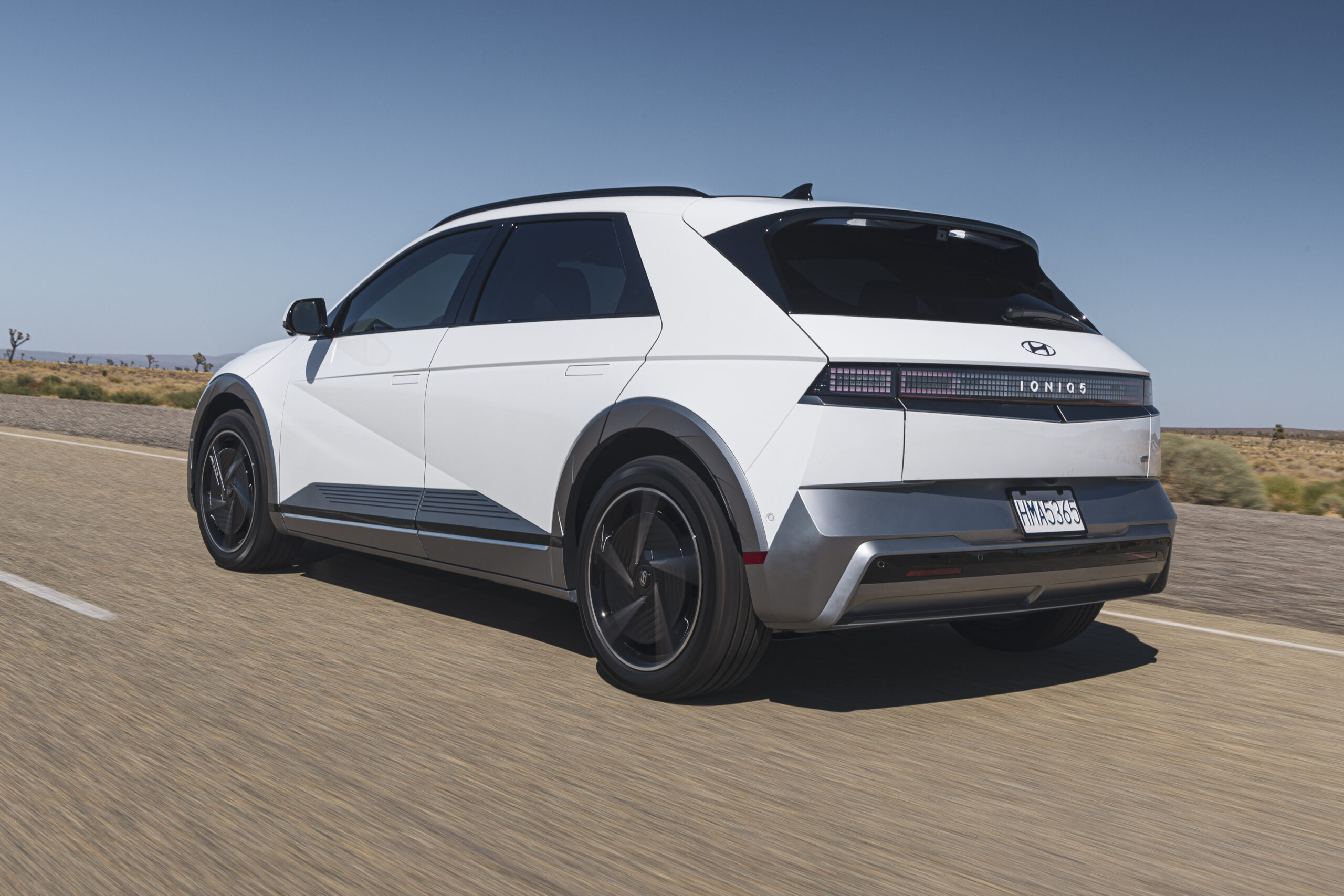Trail and High-Performance Versions Join Lineup
- NACS Charging Now Standard
- Range Jumps, Up to 11% More
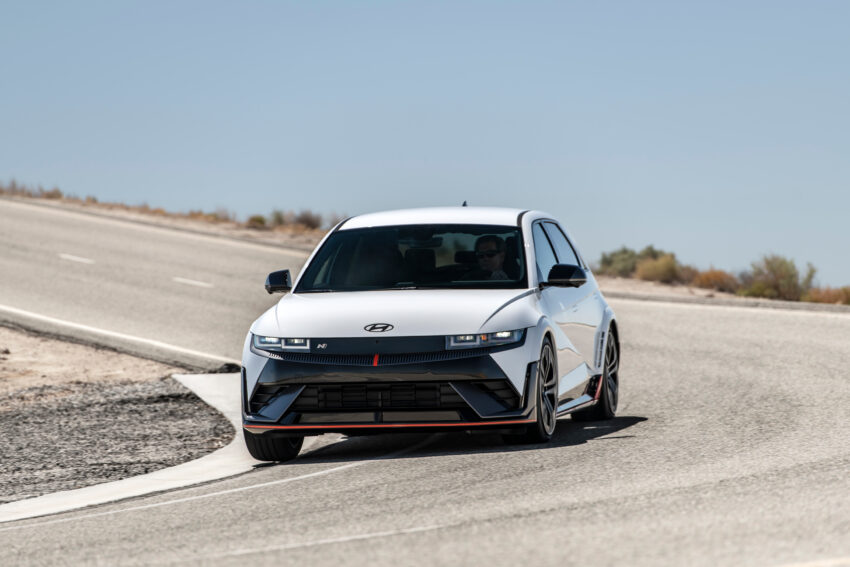
Hyundai’s 2025 Ioniq 5 family of small electric crossovers gets interior and exterior refreshing, a bit more range, and a new beefed-up XRT off-road trim and the much-lauded high-performance “N” version for the new model year.
The Ioniq 5, a top-selling EV since its introduction at the end of 2021, also ditches the charging system that’s been non-Tesla EVs’ standard for a decade in favor of a charging port that’s compatible with Tesla Superchargers.
Another notable change for 2025 is that battery size grows, to 63 kilowatt-hours from 58 kWH in 2024 for the standard range trim and to 84 kWh from 77.4 kWh for the rest of the lineup. That means range across the board is a few miles more.
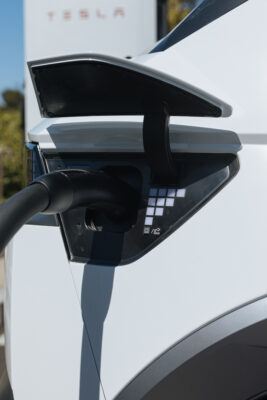
While a large number of EV makers have said they will start using the Tesla-developed North American Charging Standard (NACS) for vehicles produced this year and beyond, the 2025 Ioniq 5 is the first production EV outside of the Tesla family to to come to market with an NACS port as standard equipment.
That means no adapter is needed to use the Tesla Supercharger network at about 17,000 third generation, or V3 (250 kW), ports across the country. Conversely, 2025 models will need an adapter (its standard equipment) to use chargers equipped with CCS, and J1772 connectors for DC fast-charge stations and home and opportunity charging, respectively.
When More is Less
While the NACS port and factory-supplied CCS adapter means the 2025 Ioniq 5 can use a lot more fast charging stations, making road trips easier, it can’t charge are quickly at the Tesla stations as on fast chargers with CCS connectors.
That’s because most CCS fast chargers can supply 350KW, which is what the Ioniq 5 is designed for, while Tesla’s V3 Superchargers max out at 250 kW. While a fast charger’s maximum power delivery is rarely achieved for more than a few minutes, the Ionq 5 can usually draw close to 260 kW from CCS fast chargers but only about 135 kW from a Supercharger.
So, those speedy recharge stops -18 minutes from 10% to 80% – that set the Ioniq 5 (and other Hyundai Ioniq EVs) apart from the crowd slow to about 30 minutes on a Supercharger for models with the 84 kWH battery pack. For the standard range trim with a 63 kWh battery, fast-charge timed will drop to about 24 minutes on Superchargers, versus 20 minutes on a CCS charger.
2025 Ioniq 5 Trims, Powertrains, Range and Pricing
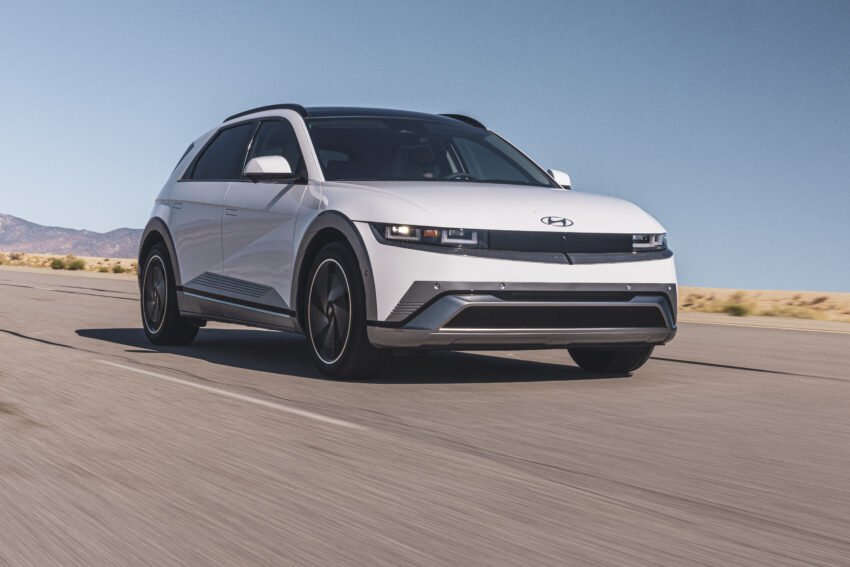
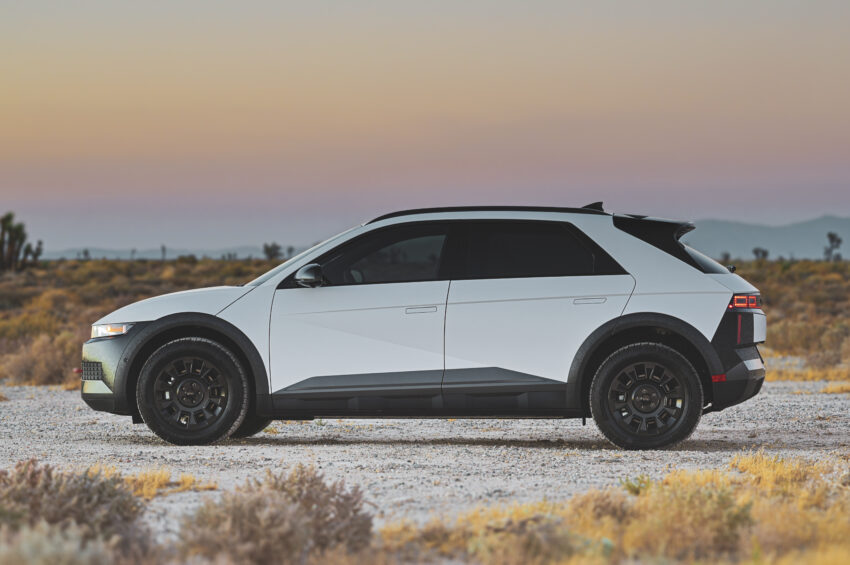
The Ioniq 5 is offered in 5 trims and three different powertrain configurations for 2025: Standard range SE and long range SE, SEL and Limited with rear-wheel drive, and SE, SEL, XRT, Limited and N with all-wheel drive. Hyundai considers the Ioniq 5 N to be a unique model, but we’re lumping it in with the rest of the family.
Rear-wheel drive
The standard range SE starts at $43,975 before any discounts or incentives and including a $1,475 destination fee. It has a 63 kWh battery and a single, rear mounted drive motor rated at 168 horsepower and is EPA rated at up to 245 miles of range versus 220 miles for the 2024 model.
The long range SE starts at $48,025. It get gets an 84 kWh battery (as do all the rest of the trims), a single rear-mounted motor rated at 225 hp, and delivers up to 318 miles of range, up from 305 miles for the 2024 versions.
The SEL starts at $50,975 with the 225 h single motor. It also gets an EPA range estimate of 318 miles.
The Limited starts at $55,675 and gets the same powertrain and horsepower and range ratings as the long-range SEL.
All-wheel drive
AWD trims get 84 kWh batteries, two motors – one on each axle – and all but the N are rated at 320 horsepower.
The AWD SE starts at $51,525 and is EPA-rated at up to 290 miles of range, versus 260 miles for 2024s.
The AWD SEL starts at $54,475 and has the same 290-mile range rating.
The AWD XRT starts at $56,875. All-terrain tires and a lifted suspension increase drag and rolling resistance, resulting in a drop in range to 259 miles. An XRT variant with a tow package starts at $57,325 and, of course, towing will reduce range even more, depending on the weight and aerodynamics of what’s being pulled.
The AWD Limited, starting at $59,575, gets 20-inch wheels and tires, increase rolling resistance. the beefier wheels an d tires plus additional features also increase weight, so the and weight Limited’s range estimated drops to 269 miles.
The N performance trim starts at $67,575. It gets 21-inch performance tires and a unique dual-motor powertrain rated at 601 horsepower. Its EPA range estimate drops to 221 miles and would be less than that at full power on a track.
Incentives
While it is now made in the U.S. – at Hyundai’s new Meta-Factory outside Savannah, Ga. -the Ioniq 5 doesn’t yet qualify for the federal clean vehicles tax credit for buyers, but Hyundai is offering a $7,500 discount until its U.S. battery factory (also in Georgia) comes on line and starts turning out EV batteries that will qualify. Those who choose to lease, of course, can get the federal tax credit applied against their lease payments thanks to an IRS ruling that excepts leased EVs from the battery sourcing restrictions that apply to cars that are sold to consumers.
2025 Ioniq 5 Features
Even in its base SE trim, the 2025 Ioniq 5 is a well-equipped vehicle. Standard features including 19″ alloys; LED lighting all-around; heated side mirrors; acoustic glass; a power opening and closing charge port door; rear window wipers (a first for the Ionic 5); cloth upholstery; an 8-way power adjustable driver’s seat; heated front seats; an infotainment system with on-board navigation, voice recognition, wireless Apply CarPlay and Android Auto connectivity, a 6-speaker audio system and a 12.3-inch touchscreen; USB-C ports for both front (3 outlets) and back (2 outlets) seating areas; dual zone climate control system; a 12.3-inch digital driver information display; remote keyless entry; a Wi-Fi hotspot and a full suite of driver assistance and safety technologies.
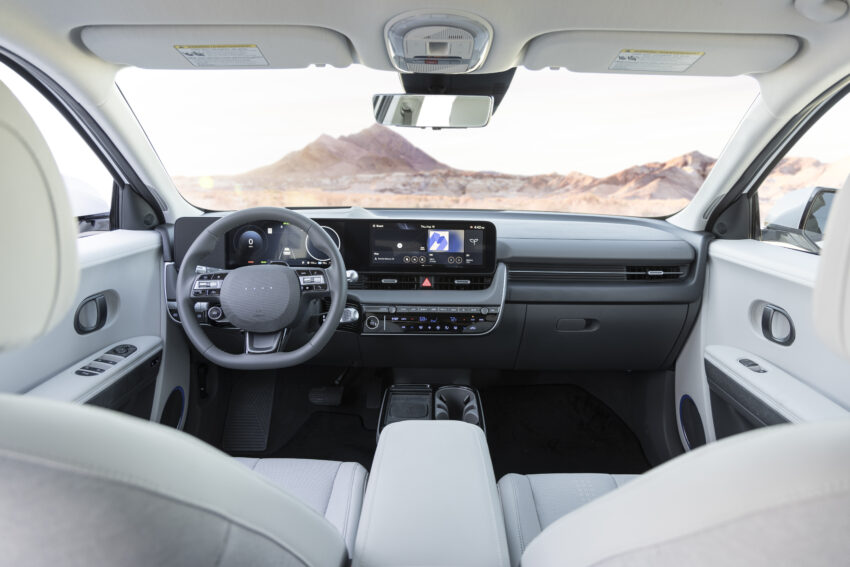
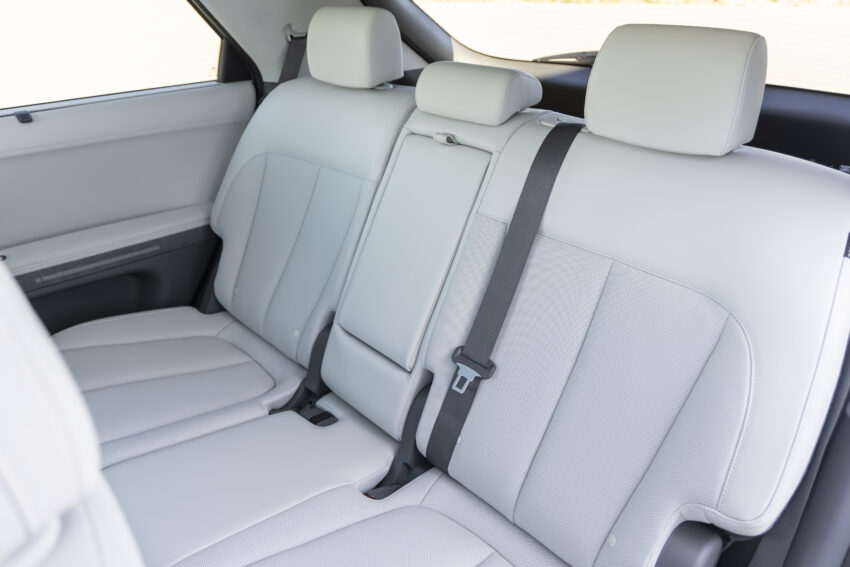
All AWD variants get an energy-saving (range improving) heat pump heating system.
Moving up to the SEL level adds projector headlamps; faux leather seat upholstery, a hands-free power liftgate, trailer hookup wiring; an 8-way power adjustable front passenger seat; wireless phone charging, and an auto-dimming rearview mirror with HomeLink.
The XRT trim also gets lots of black body cladding, adjustable head restraints for the rear outboard seats, an 8-speaker Bose premium audio system, a sliding enter console, a vehicle-to-external load power take-off system, and drops the 19-inch wheels and all-season tires in favor of black-painted 18-inch forged aluminum alloys with all-terrain tires.
The Limited rear-wheel drive adds 20-inch alloys (AWD sticks with 19-inchers), and both rear- and all-wheel drive variants get all of the SEL-level features plus the XRT’s additional comfort and convenience features and add to that with rain-sensing front windshield wipers, a fixed-glass sunroof, a head-up display, soft-touch door panels, rear side window sun shades, and a digital rearview mirror.
Specialty Versions
The “N”
Horsepower is always fun to play with, so we’ll go there first. The 2025 Ioniq 5 N joins the lineup as Hyundai’s most powerful model. It boasts a 601 hp, dual motor, all-wheel drive powertrain – boostable to 641 ponies for a 10-second burst in NGB (N Grin Boost) mode.
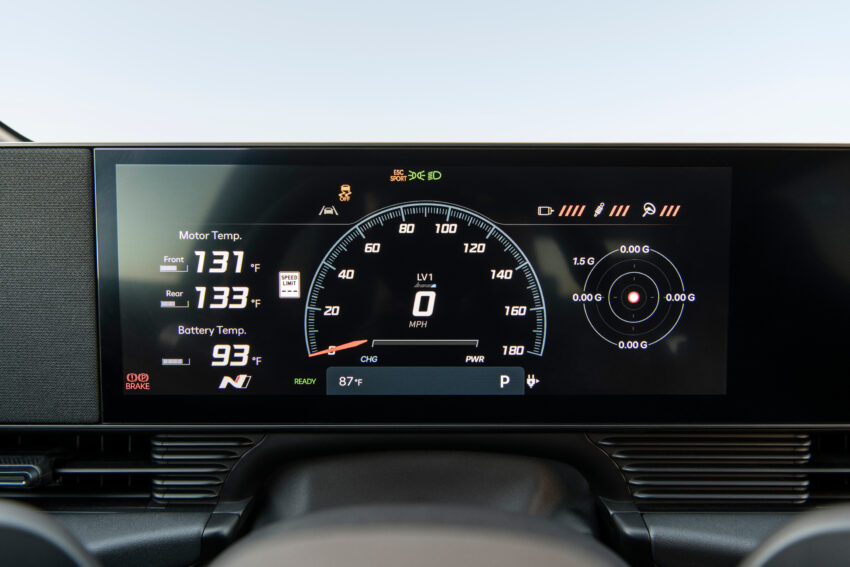
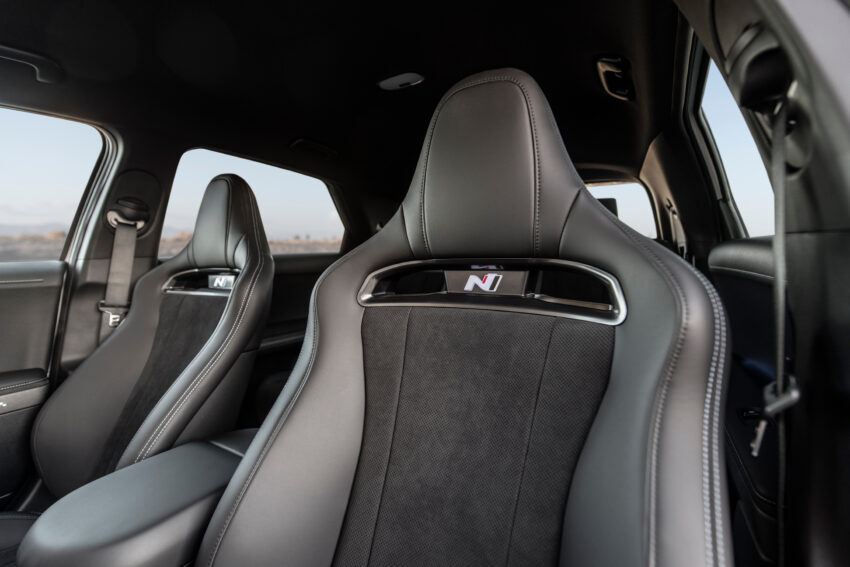
Adding all that power and race-quality suspension and computerized traction and suspension controls has a cost in energy consumption, so the N’s EPA-estimated range drops to 221 miles , down almost 22% from the regular long-range all-wheel drive Ioniq 5’s 269 miles (with 20″ wheels),
The N has less ground clearance, even riding on larger 21″ wheels, than the standard Ioniq 5. It also has has a ton of chassis, suspension, steering and performance electronics modifications to make it a track-optimized but street legal performance car.
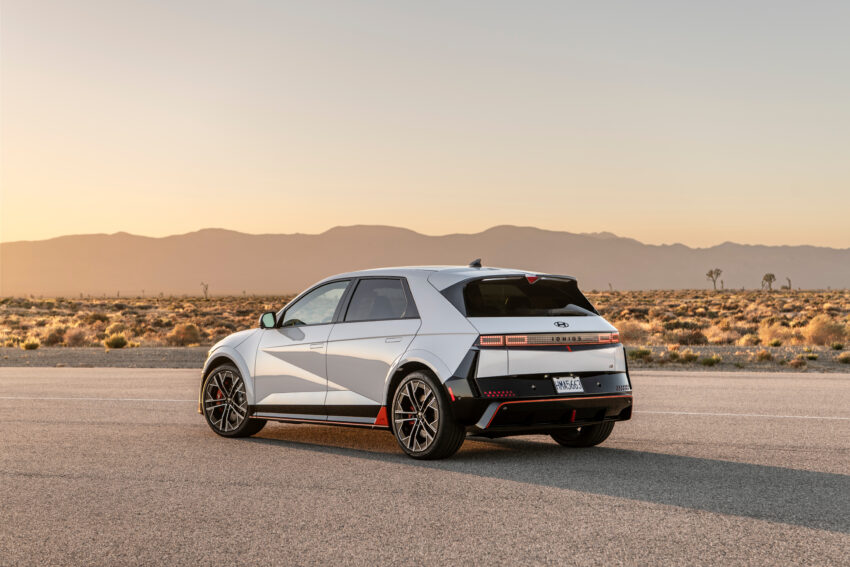
Outside, the Ioniq 5 N gets special orange-color accents, forged aluminum wheels, a model-exclusive wing-type spoiler, wider fenders, a bigger rear air diffuser, a sportier front fascia and black bumper coves with checkered-flag patterned reflecting graphics. The N also gets air curtains and active air flaps for extra cooling.
Inside, model-exclusive features include N sport bucket seats with reinforced bolsters, a fixed and padded center console, N-specific and track-oriented instrumentation on the digital driver info screen, and specialized drive mode switches and buttons on the steering wheel.
The XTR
Hyundai calls it an off-road trim, but it’s more suited to gravel and rutted dirt tracks than running the Rubicon or climbing rocks at Moab. Don’t think Jeep, instead think, perhaps, Subaru Crosstrek with almost 2 inches less ground clearance. There is a Terrain Mode button on the steering wheel, but the settings are limited to snow, mud, and sand.
The 2025 Ioniq 5 XTR gets the 320-hp all-wheel drive powertrain, plus a 0.9-inch suspension lift for a maximum of 7 inches of ground clearance, special suspension tuning, knobby 18-inch all-terrain tires on black off-road style wheels, steeper approach and departure angles thanks to redesigned and shortened front and rear fascia, and a lot of black cladding and exterior trim.
It also gets an EPA range rating of 259 miles, versus 290 miles for a comparable all-wheel drive Ioniq 5 with 19-inch wheels.
Safety and Driver Assist Stuff
All Ioniq 5s come with a fairly comprehensive active safety package that includes forward collision warning and avoidance assist with pedestrian and cyclist recognition and intersection junction, blind spot warning, rear cross-traffic warning and rear collision avoidance assist, reverse and forward parking distance warning, lane keeping and lane following assist, rear occupant alert, safe exit alert, smart cruise control with curve control and driver attention warning.
The SE trim also gets Hyunda1’s Level 1 Highway Driving Assist package that provides adaptive cruise control with full stop-and-go capability and lane centering.
The SEL and higher trims add blind spot collision avoidance assist and junction crossing and oncoming and side lane change warning and evasive steering assist, radar-based rear occupant alert and Level 2 Highway Driving Assist that adds lane changing assist to the Level 1 package.
The Ioniq 5 – except the N variant, which hasn’t been tested – gets 5-star side crash and rollover protection ratings from the National Highway Traffic Safety Administration (it hasn’t been tested for frontal collisions, but early 2024 models got 5 stars there, too). The 2024 Ioniq 5 got the highest ratings,”good,” from the Insurance Institute for Highway Safety in its side and front crashes and also received a “good” rating in collision avoidance for trims equipped with projector beam headlights. We’d expect the same ratings to apply for the 2025.
